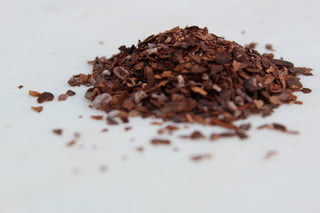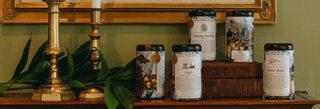Charleston, 843-722-3842, www.birlant.com.
As far back as 1556, when an unknown European noted that drinking chocolate was the “most wholesome and substantial of any food or beverage in the world, because whoever drinks a cup of this can go through the day without taking anything else,” drinking a cup of chocolate was esteemed for its sweet tasting and practicality. While tea was a popular social beverage among the wealthy, demand for chocolate climbed because “drinking chocolate was affordable to all classes of people.”[1]
Chocolate is made from cocoa beans off the cacao tree; the cacao tree “originated near… the Amazon River of South America and grew wild in the rain forests of the Amazon basin.” Cacao pods grow on the cacao tree, or cacao plant, and inside the cacao’s shell are the cocoa beans that are made into savory chocolate.[2] The botanical name for the cacao tree is Theobroma Cacao, which translated, means “cacao, food for the gods.”[3]
Chocolate was in North America before European colonists even arrived. Archeologists have found evidence of cacao in New Mexico that date between 1000 and 1125 A.D. Between New Mexico and Central America, there was a long trading route through which the Anasazi, a Native American tribe, must have imported cacao from Mexico.[4]
Around 1682, raw cocoa beans started being imported into the American colonies. Experts on cocoa have assumed these imports were for local production of chocolate in the colonies.[5] This educated conclusion is plausible, but does not afford for the alternative uses of the cacao shells. A common use for cacao shells was crafting them into a tea, specifically, cacao shell tea.

America’s First Lady Martha Washington preferred her chocolate as a tea. She would purchase only the cacao shells in order to steep them in “hot water to make a thin chocolaty drink that was easier on the stomach than oily chocolate.”[6] The experience of drinking chocolate or cacao shell tea was not too unlike traditional teatimes. Ladies would still drink chocolate in the same fashionable way as tea, served with “cakes and bread and butter.”[7]
Over the centuries chocolate has widely been associated with Europe; however, Europeans did not encounter chocolate until they discovered the Americas. The Spanish were the first to drink this unfamiliar cuisine. After one Spanish explorer described drinking chocolate as “a bitter drink for pigs,” honey or cane sugar was added to sweeten the taste. Chocolate was made immensely popular throughout Spain, and by the 17th century, all of Europe adopted the chocolate as a fashionable beverage.[8]
After tea was rejected by the American colonists, Thomas Jefferson predicted that “chocolate would become the favorite beverage in North America over coffee and tea.” Historical records prove Jefferson right; in 1773 alone, “over 320 tons of cocoa beans” were imported into the American colonies.[9]


